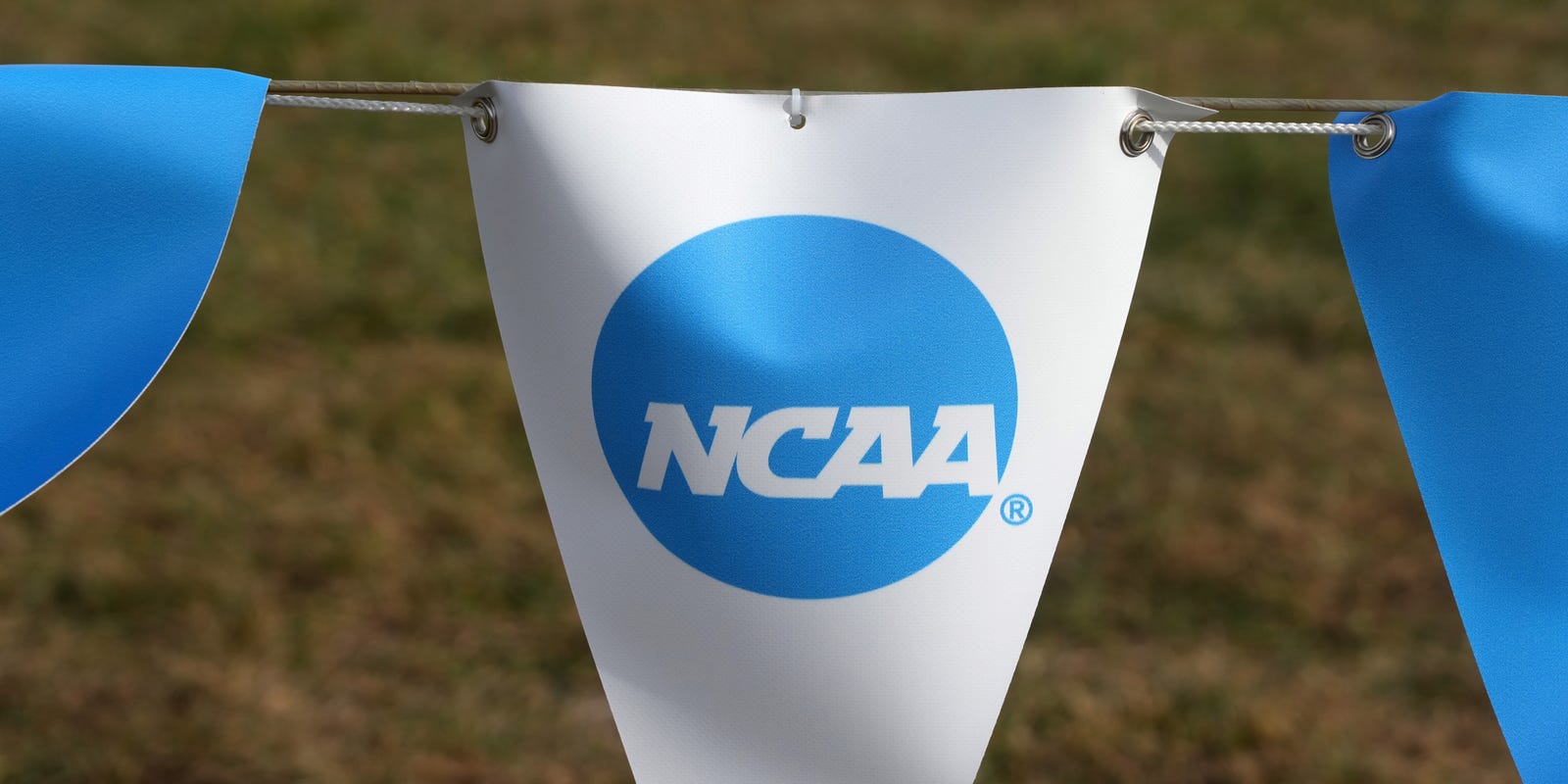
The NCAA must have the courage, and common sense, the NAIA lacked.
The NCAA’s Board of Governors meets later Thursday and is under heavy pressure to ban transgender women, as the NAIA did earlier this month. But to do so would give in to the fear mongering and misinformation that would have you believe transgender women are overrunning women’s sports, snapping up trophies and scholarships and relegating cisgender women to the sidelines like they were before the passage of Title IX.
None of which is happening.
Though the NCAA doesn’t publish the number of openly transgender athletes, it’s believed to be between 30 and 40, said Anna Baeth, the director of research at Athlete Ally, which works to create safe and supportive environments for LGBTQ+ athletes. That’s out of the more than 523,000 NCAA athletes who competed in Divisions I, II and III in 2022-23, the most recent data available.
Do the math, and that works out to less than 0.008%.
“We are talking a very, very small number of athletes,” Baeth said.
But demonizing transgender people, transgender women athletes in particular, has become the new favored blood sport of the right wing.
Half of the states now have laws barring transgender girls and young women from playing sports — even though many of the politicians who passed them couldn’t cite a single instance where this was happening. Nor is there actual science to support the exclusion of trans athletes. Why? Because there haven’t been enough of them to conduct a study of legitimate scientific rigor!
A study published in the British Journal of Sports Medicine last month found transgender women were actually at a disadvantage in certain physical categories, including lung function and jump height, but said further studies are necessary. And that “these results should caution against precautionary bans and sport eligibility exclusions that are not based on sport-specific (or sport-relevant) research.”
“That is the irony here, right? If we’re talking about trans women in particular, there simply aren’t enough elite, transgender women athletes to do a study of this kind. Even a case study,” Baeth said.
Instead, the anti-trans mob talks about grip strength and opines about the (assumed) benefits of testosterone. They compare the results of cisgender male athletes to those of cisgender female athletes and say of course that means transgender women have an advantage. They cherry-pick results of transgender athletes and shriek that every sport is going to go the way of swimming, where Lia Thomas won an NCAA title after transitioning.
Which is laughable. Transgender athletes have been able to compete in the Olympics since the Athens Games in 2004 while the NCAA has had protocols governing trans athletes since 2011. If transgender women were going to “take over” women’s sports, they’d surely have done so by now.
All the while, the lives of vulnerable young people hang in the balance. And I am not referring only to transgender youth, who have a horrifyingly high rate of suicide and self-harm as it is. Any cisgender girl with short hair or who looks like a tomboy is at risk of being caught up in these witch hunts, too.
In states with anti-trans laws, athletes have already been, wrongly, accused of being transgender. Elite track and field athletes have been subjected to gender testing simply because of the way they looked. After South Carolina coach Dawn Staley said she doesn’t have a problem with transgender women playing college basketball, internet lowlifes trolled through the Gamecocks roster and theorized about which players might be transgender.
No proof. No facts. Just ignorance and hate.
“The sports community, whether it’s the International Olympic Committee, the NCAA, every state board — we’ve always proceeded into fairness and safety with a lot of thoughtfulness to preserve fair play in sports,” U.S. Rep. Lori Trahan, D-Massachusetts, told USA TODAY Sports at the Final Four.
“There’s a group of experts that should be leading this discussion, not the most extreme Republicans who use this as a political issue,” said Trahan, who went to Georgetown on a volleyball scholarship. “I don’t really engage with them on this issue because they’re just not serious about making sports better. In fact, most of them (don’t care).”
To Trahan’s point, there are very real ways in which women athletes are under threat. A USA TODAY investigation in 2022 found schools consistently devote fewer resources to their women’s teams and shortchange their women athletes on opportunities to play and scholarships. Trahan called enforcement of Title IX “a joke,” and expressed concern that NIL collectives will offer schools another way to circumvent the law.
And two weeks ago, two former Kentucky swimmers filed a federal lawsuit against the university, its athletic director and their former coach. Lars Jorgensen sexually assaulted and harassed members of the swim team and its coaching staff, the lawsuit alleges, and the university turned a blind eye to it.
But sure, it’s trans athletes who are doing the real damage. Let’s have the NCAA, high schools and local youth sports organizations expend their precious time and resources policing the bodies of girls and young women.
“I’m not saying politics haven’t been involved in sports forever because they have,” Baeth said. “But the egregious nature of this is really frightening.”
The NCAA has already caved to the anti-trans extremists by requiring that sports adhere to the guidelines of their international governing bodies, limiting opportunities for transgender swimmers, cyclists and track and field athletes. But fear is not a substitute for facts, and no good policy has ever come from hate and hysteria.
If the NCAA is going to consider imposing a total ban like the NAIA did, science and common sense should be the deciding factors. And so far, there hasn’t been enough of either.



